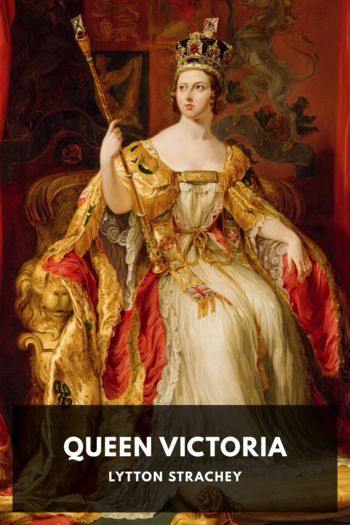Queen Victoria Lytton Strachey (a book to read .txt) 📖

- Author: Lytton Strachey
Book online «Queen Victoria Lytton Strachey (a book to read .txt) 📖». Author Lytton Strachey
Shortly afterwards Mr. Scott found some consolation in building the St. Pancras Hotel in a style of his own.320
And now another and yet more satisfactory task was his. “My idea in designing the Memorial,” he wrote, “was to erect a kind of ciborium to protect a statue of the Prince; and its special characteristic was that the ciborium was designed in some degree on the principles of the ancient shrines. These shrines were models of imaginary buildings, such as had never in reality been erected; and my idea was to realise one of these imaginary structures with its precious materials, its inlaying, its enamels, etc. etc.”321 His idea was particularly appropriate since it chanced that a similar conception, though in the reverse order of magnitude, had occurred to the Prince himself, who had designed and executed several silver cruet-stands upon the same model. At the Queen’s request a site was chosen in Kensington Gardens as near as possible to that of the Great Exhibition; and in May, 1864, the first sod was turned. The work was long, complicated, and difficult; a great number of workmen were employed, besides several subsidiary sculptors and metal—workers under Mr. Scott’s direction, while at every stage sketches and models were submitted to Her Majesty, who criticised all the details with minute care, and constantly suggested improvements. The frieze, which encircled the base of the monument, was in itself a very serious piece of work. “This,” said Mr. Scott, “taken as a whole, is perhaps one of the most laborious works of sculpture ever undertaken, consisting, as it does, of a continuous range of figure-sculpture of the most elaborate description, in the highest alto-relievo of life-size, of more than 200 feet in length, containing about 170 figures, and executed in the hardest marble which could be procured.” After three years of toil the memorial was still far from completion, and Mr. Scott thought it advisable to give a dinner to the workmen, “as a substantial recognition of his appreciation of their skill and energy.” “Two long tables,” we are told, “constructed of scaffold planks, were arranged in the workshops, and covered with newspapers, for want of tablecloths. Upwards of eighty men sat down. Beef and mutton, plum pudding and cheese were supplied in abundance, and each man who desired it had three pints of beer, gingerbeer and lemonade being provided for the teetotalers, who formed a very considerable proportion … Several toasts were given and many of the workmen spoke, almost all of them commencing by ‘Thanking God that they enjoyed good health;’ some alluded to the temperance that prevailed amongst them, others observed how little swearing was ever heard, whilst all said how pleased and proud they were to be engaged on so great a work.”
Gradually the edifice approached completion. The one hundred and seventieth life-size figure in the frieze was chiselled, the granite pillars arose, the mosaics were inserted in the allegorical pediments, the four colossal statues representing the greater Christian virtues, the four other colossal statues representing the greater moral virtues, were hoisted into their positions, the eight bronzes representing the greater sciences—Astronomy, Chemistry,





Comments (0)